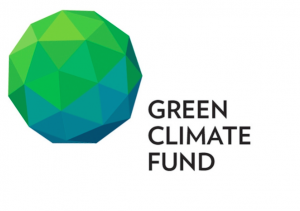Mitigating and adapting to climate change will require significant financial resources to restructure and reorganize various systems in human society. Mitigation is the efforts taken to reduce the burning of fossil fuels and the creation and protection of carbon sinks. Energy systems need to be shifted from fossil fuel-based schemes to renewable energy sources appropriate to the region. Adaptation is the actions taken to respond to the consequences of a warmer planet. Buildings, infrastructure, healthcare, food production, and civil society must prepare for and cope with the increased risk of extreme weather events and previously unexperienced vulnerabilities. Climate finance is the utilization of funds on a local, national, or international scale from public, private or other sources to address the various issues related to climate change. Reaching a hopefully effective compromise in the various climate change negotiations is a success in its own right, but communities cannot take action to reduce carbon emissions or increase their resiliency unless they have the financial resources available to them to do so.
The United Nations Framework Convention on Climate Change (UNFCCC) established the means to give developing countries, which are more vulnerable to climate change and economically weaker, access to climate finance. Countries such as Angola, Afghanistan, and Nepal are examples of countries that would benefit from economic assistance. Two operators of this financing mechanism are the Global Environment Facility (GEF) and the Green Climate Fund (GCF). The Green Climate Fund began collecting funds in 2014 and gathered pledges worth USD 10.3 billion. Some examples of initiatives that need these funds are promoting sustainable forestry practices, building efficient public transport systems, and strengthening the agricultural resilience.

The Green Climate Fund is one of several mechanisms used to assist developing countries on mitigating and adapting to climate change.
Climate finance is an important aspect of global efforts to respond to climate change because of the inequality between nations in their responsibility of greenhouse gas emissions (GHGs) and in the financial resources available to those nations in tackling climate mitigation and adaptation. The concept is outlined in the phrase “common but differentiated responsibility and respective capabilities” (UNFCCC article 3 paragraph 1). Heavily industrialized and developed nations have historically contributed to the majority of GHG emissions and therefore hold much of the blame for raising the average global temperature. These countries are also the most equipped to provide funds to lesser developed countries. These include the United States, Japan, and countries in the European Union. The UNFCCC, the Kyoto Protocol, and the Paris Agreement all call on more financially secure countries to assist countries that are not as economically developed and are more vulnerable to the consequences of climate change.
Works Cited
“About the Fund.” Green Climate Fund, www.greenclimate.fund/who-we-are/about-the-fund
“What Is Climate Finance?” UNFCCC EHandbook – Startpage, UNFCCC, bigpicture.unfccc.int
